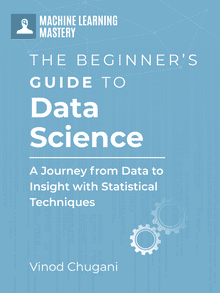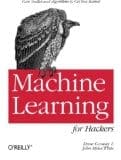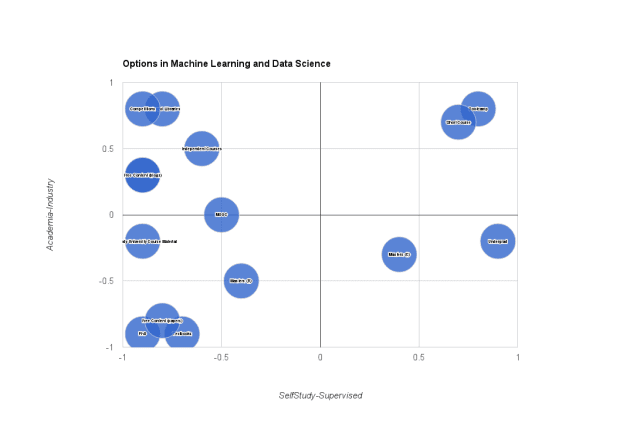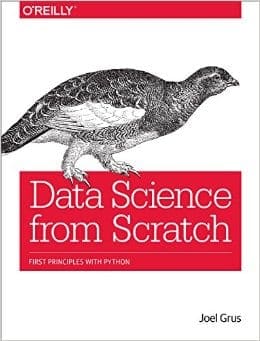Data science uses mathematics to analyze data, distill information, and tell a story. The result of data science may be just to rigorously confirm a hypothesis, or to discover some useful property from the data. There are many tools you can use in data science, from basic statistics to sophisticated machine learning models. Even the most common tool can work wonderfully in a data science project.
In this 7-part crash course, you will learn from examples how to perform a data science project. This mini-course is focused on the core of data science. It is assumed that you gathered the data and made it ready to use. Writing a web scraper and validating the data you collect can be a big topic; it is not the scope here. This mini-course is intended for practitioners who are already comfortable with programming in Python, and willing to learn about the common tools for data science such as pandas and matplotlib. You will see how these tools can help, but more importantly, learn the process of drawing a quantitatively supported statement from the data you have. Let’s get started.

Beginner’s Guide to Data Science (7-day Mini-Course)
Photo by Eduardo Soares. Some rights reserved.
Who Is This Mini-Course For?
Before we start, let’s ensure you are in the right place. The list below provides some general guidelines as to who this course was designed for. Don’t panic if you don’t match these points exactly; you might just need to brush up in one area or another to keep up.
- Developers that know how to write a little code. This means that it is not a big deal for you to get things done with Python and know how to setup the ecosystem on your workstation (a prerequisite). It does not mean you’re a wizard coder, but you’re not afraid to install packages and write scripts.
- Developers that know a little statistics. This means you know about some basic statistical tools and are not afraid to use them. It does not mean you are a PhD in statistics, but you can look up the terms and learn if you encounter them.
- Developers who know a bit about data science tools. Using a Jupyter notebook is common in data science. Handing data in Python would be easier if you use the library pandas. This list goes on. You are not required to be an expert in any library, but being comfortable invoking the different libraries and writing code to manipulate data is all you need.
This mini-course is not a textbook on data science. Rather, it is a project guideline that takes you step-by-step from a developer with minimal knowledge to a developer who can confidently demonstrate how a data science project can be done.
Mini-Course Overview
This mini-course is divided into 7 parts.
Each lesson was designed to take the average developer about 30 minutes. You might finish some much sooner and other you may choose to go deeper and spend more time.
You can complete each part as quickly or as slowly as you like. A comfortable schedule may be to complete one lesson per day over seven days. Highly recommended.
The topics you will cover over the next 7 lessons are as follows:
- Lesson 1: Getting the Data
- Lesson 2: Missing Values
- Lesson 3: Descriptive Statistics
- Lesson 4: Exploring Data
- Lesson 5: Visualize Correlation
- Lesson 6: Hypothesis Testing
- Lesson 7: Identifying Outliers
This is going to be a lot of fun.
You’ll have to do some work, though: a little reading, research, and programming. You want to learn how to finish a data science project, right?
Post your results in the comments; I’ll cheer you on!
Hang in there; don’t give up.
Lesson 01: Getting the Data
The dataset we will use for this mini-course is the “All Countries Dataset” that is available on Kaggle:
This dataset describes almost all countries’ demographic, economic, geographic, health, and political data. The most well-known dataset of this type would be the CIA World Fact Book. Scrapping from the World Fact Book should give you more comprehensive and up-to-date data. However, using this dataset in CSV format would save you a lot of trouble when building your web scraper.
Downloading this dataset from Kaggle (you may need to sign up an account to do so), you will find the CSV file All Countries.csv. Let’s check this dataset with pandas.
|
1 2 3 4 |
import pandas as pd df = pd.read_csv("All Countries.csv") df.info() |
The above code will print a table to the screen, like the following:
|
1 2 3 4 5 6 7 8 9 10 11 12 13 14 15 16 17 18 19 20 |
<class 'pandas.core.frame.DataFrame'> RangeIndex: 194 entries, 0 to 193 Data columns (total 64 columns): # Column Non-Null Count Dtype --- ------ -------------- ----- 0 country 194 non-null object 1 country_long 194 non-null object 2 currency 194 non-null object 3 capital_city 194 non-null object 4 region 194 non-null object 5 continent 194 non-null object 6 demonym 194 non-null object 7 latitude 194 non-null float64 8 longitude 194 non-null float64 9 agricultural_land 193 non-null float64 ... 62 political_leader 187 non-null object 63 title 187 non-null object dtypes: float64(48), int64(6), object(10) memory usage: 97.1+ KB |
In the above, you see the basic information of the dataset. For example, at the top, you know that there are 194 entries (rows) in this CSV file. And the table tell you there are 64 columns (indexed by number 0 to 63). Some columns are numeric, such as latitude, and some are not, such as capital_city. The data type “object” in pandas usually means it is a string type. You also know that there are some missing values, such as in agricultural_land, there are only 193 non-null values over 194 entries, meaning there is one row with missing values on this column.
Let’s see more detail into the dataset, such as taking the first five rows as a sample:
|
1 |
df.head(5) |
This will show you the first five rows of the dataset in a tabular form.
Your Task
This is the basic exploration of a dataset. But using the head() function may not be always appropriate (e.g., when the input data are sorted). There are also tail() function for the similar purpose. However, running df.sample(5) would usually more helpful as it is to randomly sample 5 rows. Try with this function. Also, as you can see from the above output, the columns are clipped to the screen width. How to modify the above code to show all columns from the sample?
Hint: There is a to_string() function in pandas as well as you can adjust the general print option display.max_columns.
In the next lesson, you will see how to check your data for missing values.
Lesson 02: Missing Values
Before analyzing any data, it is important to know how the data looks like. In pandas, a column in floating point may represent the missing values as NaN (“not a number”) and the presence of such values will break a lot of functions.
In pandas, you can find the missing values by isnull() or notnull(). These functions are to check whether the value is null, which includes the Python None and floating point NaN. The return value is boolean. If it is applied to a column, you get a column of True or False. The sum would be the count of True values.
In below, you use isnull() to find the null values, then sum the result to count the number of them. You can sort the result to see which columns have the most and the least missing values.
|
1 |
print(df.isnull().sum().sort_values(ascending=False)) |
You will see the above prints:
|
1 2 3 4 5 6 7 8 9 10 11 12 |
internally_displaced_persons 121 central_government_debt_pct_gdp 74 hiv_incidence 61 energy_imports_pct 56 electricty_production_renewable_pct 56 ... land_area 0 urban_population_under_5m 0 rural_land 0 urban_land 0 country 0 Length: 64, dtype: int64 |
In the above, you can see that some columns have no missing value, such as the name of the country. The column with most of the missing values is internally_displaced_persons, which is a demographic of refugees. As you can imagine, this is not normal and it is reasonable that most countries have no such population. Therefore, you can replace the missing value with zero when you work on that. This is an example of imputation using your domain knowledge.
To visualize missing values, you can use the Python package missingno. It is useful to display how the missing values are distributed:
|
1 2 3 4 5 |
import missingno as msno import matplotlib.pyplot as plt msno.matrix(df, sparkline=False, fontsize=12) plt.show() |
The chart from above shows that some countries (rows) and some attributes (columns) have a lot of missing values. You can probably guess which column in the chart corresponds to internally_displaced_persons. The countries with many missing values are probably because those countries are not collecting those statistics.
Your Task
Not all missing values should be replaced by zero. Another strategy is to replace the missing value with the mean. Can you find another attribute in this dataset where the missing value replaced by mean is appropriate? Further, how to replace the missing value in a pandas DataFrame?
In the next lesson, you will see how to use basic statistics to explore the data.
Lesson 03: Descriptive Statistics
Given a pandas DataFrame, looking at the descriptive statistics is an important first step. In code, you can use the describe() function from the DataFrame:
|
1 |
print(df.describe()) |
This shows the mean, the standard deviation, the min, the max, and the quartiles of each numeric attribute. Non-numeric columns are not reported in the output. You can verify this by printing the set of columns and compare:
|
1 2 |
print(df.columns) print(df.describe().columns) |
There are a lot of columns in this dataset. To look at the descriptive statistics of a particular column, you can filter its output as it is also a DataFrame:
|
1 |
print(df.describe()["inflation"]) |
This prints:
|
1 2 3 4 5 6 7 8 9 |
count 184.000000 mean 13.046591 std 25.746553 min -6.687320 25% 4.720087 50% 7.864485 75% 11.649325 max 254.949000 Name: inflation, dtype: float64 |
This is the same as defining df2=df.describe() and then extracting with df2["inflation"]. In case of the columns with missing value, the descriptive statistics are computed by skipping all the missing values.
Your Task
Continue from the previous example, you can tell that there are missing values in the inflation column by checking that df["inflation"].isnull().sum() is not zero. The mean can be computed using df["inflation"].mean(). How you can verify that this mean has all the missing values skipped?
In the next lesson, you will see how you can further your knowledge about the data.
Lesson 04: Exploring Data
The goal of data science is to tell a story from the data. Let’s see some examples here.
In the dataset, there’s a column life_expectancy. What contributes to life expectancy? You can make some assumptions and verify with the data. You can check if life expectancy varies in different region in the world:
|
1 |
print(df.groupby("region").mean(numeric_only=True)["life_expectancy"]) |
Run above and observe its output. There are some variations, but they are not very drastic. The groupby() function applied on a DataFrame is similar to the GROUP BY clause in a SQL statement. But in pandas, applying a function on a groupby needs to pay attention to the different data types in the columns. If you use mean() like above, it is to compute the mean of all columns (and you selected life_expectancy afterward), which will fail if the column is not numeric. Hence, you need to add an argument to limit the operation to only those columns.
From above, you can tell that life expectancy is not related to which part of the world you’re located. You can also group by continent instead of region, but it may not be appropriate since some continents, like Asia, are large and diverse. The average in those cases may not be informative.
You can apply a similar operation to find not the life expectancy but the GDP per capita. This is the country’s GDP divided by the population, which is one of the metrics to tell how rich a country is. In code:
|
1 2 |
df["gdp_per_capita"] = df["gdp"] / df["population"] print(df.groupby("region").mean(numeric_only=True)["gdp_per_capita"]) |
This shows a vast difference in different regions. Hence, unlike life expectancy, where you live is correlated to how rich you are.
Besides group by, the other useful method to explore and summarize data is pivot table. There is a function in pandas DataFrame for that. Let’s see how the different type of government is preferred in different regions:
|
1 |
print(df.pivot_table(index="region", columns="democracy_type", aggfunc="count")["country"]) |
The table above shows the count as it is specified as the aggregate function. The rows (index) are “region” and the columns are the values from democracy_type. The number in each cell counts the instances of such a “democracy type” within the same “region.” Some values are NaN, which means there are no data to “count” for that combination. And since it is a count, you know it means zero.
Your Task
Pivot table and group by are very powerful tool to summarize data and distill information. How can you use the pivot table above to find different regions’ average GDP per capita and democracy types? You will see the missing values. What is a reasonable missing value to impute to help find the average across different democracy types regardless of regions?
In the next lesson, you will learn to investigate data from plots.
Lesson 05: Visualize Correlation
In the previous lesson, we explored the column of life expectancy and the GDP per capita. Are they correlated?
There are many ways to tell whether two attributes are correlated. A scatter plot is a good first step because it provides visual proof. To plot the GDP per capita (as computed in Lesson 4 by dividing GDP and population) against the life expectancy, you can use the Python library Seaborn together with Matplotlib:
|
1 2 3 |
import seaborn as sns sns.scatterplot(data=df, x="life_expectancy", y="gdp_per_capita", hue="continent") |
The argument hue in the scatter plot function above is optional. This colors the dot according to the value of another attribute, hence it is useful to tell, for example, Africa is pronounced in lower end of life expectancy and GDP per capita.
However, there’s a problem in the chart produced above: You cannot see any linear pattern and it is difficult to tell the relationship between the two attributes. In this case, you must transform the data to determine the relationship. Let’s try with a semi-log plot in which the y-axis is presented in log scale. You can use Matplotlib to adjust the scale:
|
1 2 |
sns.scatterplot(data=df, x="life_expectancy", y="gdp_per_capita", hue="continent") plt.yscale("log") # make y axis in log scale |
Now, it seems more plausible that life expectancy is linear with the log of GDP per capita.
Numerically, you can compute the correlation factor between log of GDP per capita and life expectancy. A correlation factor close to +1 or -1 means the correlation is strong. Uncorrelated attributes would demonstrate a correlation factor close to zero. You can find the strongest correlated factors among all numerical attributes using pandas:
|
1 2 |
top_features = df.corr(numeric_only=True)["life_expectancy"].abs().sort_values(ascending=False).index[:6] print(top_features) |
The code above finds the top 6 correlated attributes to life expectancy. It is regardless of positive or negative correlation since the sorting is based on the absolute value. Life expectancy itself should be at the top of the list by definition since anything has a correlation 1 with itself.
You can create a correlogram using Seaborn to show the scatterplot between any pair of them:
|
1 2 |
sns.pairplot(df, vars=list(top_features)) plt.show() |
A correlogram helps you quickly visualize what is correlated. For example, the self-employed percentage strongly correlates to the vulnerable employment percentage. The birth rate is negatively correlated to life expectancy (maybe because the older age, the less likely a person is to give birth). The histogram in the diagonal shows how that attribute is distributed.
Your Task
A scatter plot is a powerful tool, especially when you have a computer to help you make one. In above, you established how two attributes are correlated visually, but correlation is not causation. To establish causality, you need more evidence. In statistics, there are nine “Bradford Hill criteria” that are famous in epidemiology. A simpler and weaker formulation are the two principles of Granger causality. Look at the data you have and compare to the Granger causality principles, what additional data is required to prove that life expectancy is caused by GDP per capita?
In the next lesson, you will use statistical tests against your data.
Lesson 06: Hypothesis Testing
Since data science is to tell a story, how you can back up your claim is central to your work in a data science project.
Let’s focus on life expectancy again: Urbanization is key to improving life expectancy since it also correlates with advanced medicine, hygiene, and immunization. How do you prove that?
An easy way is to show two histograms of life expectancy, separating that for more urbanized countries and those that are not. Let’s define an urban country with more than 50% urban population. You can compute the population percentage using pandas, then separate the dataset into two:
|
1 2 3 |
df["urban_pct"] = df["urban_population"]/(df["rural_population"] + df["urban_population"]) df_urban = df[df["urban_pct"] > 0.5] df_rural = df[df["urban_pct"] <= 0.5] |
Then, you can create an overlapped histogram to show the life expectancy:
|
1 2 3 4 5 6 7 |
plt.hist(df_urban["life_expectancy"], alpha=0.7, bins=15, color="blue", label="Urba") plt.hist(df_rural["life_expectancy"], alpha=0.7, bins=15, color="green", label="Rural") plt.xlabel("Life expectancy") plt.ylabel("Number of countries") plt.legend(loc="upper left") plt.tight_layout() plt.show() |
This confirms the hypothesis above that urban countries have a higher life expectancy. However, a chart is not very strong evidence. The better way is to apply some statistical tests to quantify the strength of our claim. You want to compare the mean life expectancy between two independent groups, hence the t-test is appropriate. You can run a t-test using the SciPy package as follows:
|
1 2 3 4 5 6 7 |
import scipy.stats as stats df_urban = df[(df["urban_pct"] > 0.5) & df["life_expectancy"].notnull()] df_rural = df[(df["urban_pct"] <= 0.5) & df["life_expectancy"].notnull()] t_stat, p_value = stats.ttest_ind(df_urban["life_expectancy"], df_rural["life_expectancy"], equal_var=False) print("t-Statistic:", t_stat) print("p-value", p_value) |
Unlike Matplotlib, which will ignore the missing values, SciPy will not compute the statistics if any NaN exists in the provided data. Hence, above, you clean up the data by removing the missing values and re-create the DataFrames df_urban and df_rural. The t-test provided a p-value of 1.6×10-10, which is very small. Hence, the null hypothesis is rejected, i.e., rejecting that the two groups shared the same mean. But this t-test is not telling whether df_urban or df_rural his the higher mean. You can easily tell by computing the mean separately afterward.
Your Task
Instead of re-creating the DataFrames df_urban and df_rural, you can make the t-test from SciPy work by filling in the missing values with their respective mean. Try this out. How is the p-value changed? Does it change your conclusion?
In the next lesson, you will find outliers from the data.
Lesson 07: Identifying Outliers
An outlier is a sample that is very different from the majority, making it very hard to consider as part of the larger group.
The most well-known way of identifying outliers is the 68-95-99 rule of normal distribution, which says one, two, and three standard deviations away from the mean covering 68%, 95%, and 99% of the samples respectively. Usually, a sample 2 SD away from the mean is far enough to be considered an outlier. Let’s see if any country’s life expectancy is an outlier.
Before you use the 68-95-99 rule, you want to transform the data closer to normal distribution. One way is to use Box-Cox transform. You know the transform works well if you compare the skewness before and after the transform. The perfect normal distribution has a skewness zero:
|
1 2 3 |
boxcox_life, lmbda = stats.boxcox(df_rural["life_expectancy"]) boxcox_life = pd.Series(boxcox_life) print(df_rural["life_expectancy"].skew(), boxcox_life.skew()) |
After the Box-Cox transform, the skewness changed from 0.137 to -0.006, which is closer to zero. The lambda value computed with the Box-Cox transform will be useful later. As a sidenote, you can verify that the transformed data is roughly symmetric:
|
1 2 |
plt.hist(boxcox_life, bins=15) plt.show() |
Assuming the Box-Cox transformed data follows normal distribution, we can easily find what is 2 SD below and above the mean. But that is in the transformed data. Recall that Box-Cox transform is to transform y into w=(yλ – 1)/λ. Hence we can perform the inverse transform with (wλ + 1)1/λ:
|
1 2 3 4 5 6 |
mean, stdev = boxcox_life.mean(), boxcox_life.std() plus2sd = mean + 2 * stdev minus2sd = mean - 2 * stdev upperthreshold = (plus2sd * lmbda + 1)**(1/lmbda) lowerthreshold = (minus2sd * lmbda + 1)**(1/lmbda) print(lowerthreshold, upperthreshold) |
These are the lowerbound and upperbound for what is not outlier among the countries with the more rural population. Let’s see whether there is any country outside this range:
|
1 2 |
print(df_rural[df_rural["life_expectancy"] <= lowerthreshold]) print(df_rural[df_rural["life_expectancy"] >= upperthreshold]) |
So Liechtenstein is an outlier at the upper end, while Chad and Lesotho are at the lower end. This test only points out these outliers to you without any explanation. You will need to look further into the data to hypothesize why these are the cases. But this is a typical workflow in data science.
Your Task
You can repeat this on df_urban to find which urban countries are the outliers. How many countries are outliers at the lower and upper end?
This was the final lesson.
The End! (Look How Far You Have Come)
You made it. Well done!
Take a moment and look back at how far you have come.
- You discovered pandas, missingno, scipy, seaborn, and matplotlib as the Python libraries to help you finish a data science project.
- With basic statistics, you can explore your dataset for insights. You can also confirm your hypothesis from your data.
- You see how you can explore data using visuals such as scatter plot, and also using statistical tests.
- You know how transforming data can help you extract information from data, such as finding the outliers.
Don’t make light of this; you have come a long way in a short time. This is just the beginning of your data science journey. Keep practicing and developing your skills.
Summary
How did you do with the mini-course?
Did you enjoy this crash course?
Do you have any questions? Were there any sticking points?
Let me know. Leave a comment below.








No comments yet.